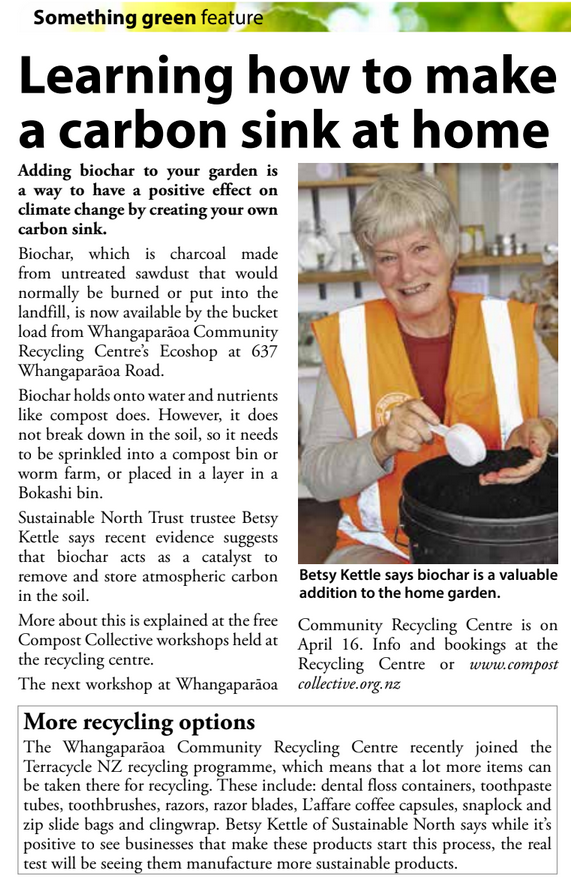
Betsy was #8 signup to the ABE newsletter way back in 2013 and attended our Chaos Springs workshop in 2018. Doing great work in her community.

If you can make it to this years…
Living Wood Fair 17 & 18 April 2021 East Takaka – Golden Bay
Then check out the biochar workshop at 3pm on Saturday.
David Field discusses large pile burns…
Following on from the article midyear 2020 here is an update on what has been happening since then.
During September and October I held 3 (4 hour long) workshops teaching a total of 21 people (mostly local) the basics of making biochar using a cone pit, 2 drum containers, a retort and a simple top lit stick stack…..pics below.
Everyone seemed to enjoy the workshops, which were very ‘Hands on” and gave some positive feedback. I know some of them are now actively making biochar in their own backyards. I felt it was important to also show how to crush, charge and apply the biochar into the soil.
One of the workshop participants had a huge pile of Eucalyptus slash in her paddock and offered it up to turn into biochar as she wanted it out of the way and gone. So chatting to another biochar enthusiast we thought it would be a great experiment to scale up the small stack burn we did at the workshop (no pit or kontiki required). We spent a total of about 20 hours cutting and stacking the piles as tightly as we could, minimising the air gaps, and ended up with two piles about 5 x 5 x 2.5 metres high.
That gave us a harvest of 2 cubic metres of crushed biochar.
See photos below. Many thanks to Phil Stevens who came over from Ashhurst to help and share his expertise.
Reviewing the process we found that the harvest was way less than using a kontiki or cone pit for both the time it took and the return on the quantity of feedstock used. However we all had a lot of fun and engaged in interesting dialog as there were a few other people that came along to observe and learn.
Would I do it again or recommend giving it a try?
Yes…. but only if
1. The stack is already there just waiting to be burnt as a bonfire. I see many such stacks in paddocks driving around the countryside and it seems a waste that all that carbon goes back into the atmosphere as CO2 and other gases instead of (at least some of it) is captured and locked away in the earth.
2. That there is a ready supply of water available for quenching the fire and for safety.
What’s next?
Nothing until the total fire ban is lifted except cutting and drying feedstock.
Phil and I will be running a couple of biochar workshops in May for the Wellington /Horowhenua Tree Crops Assn members on the Kapiti Coast and in Upper Hutt.
Back here in the Wairarapa, Toby and I will be doing the same for a local Permaculture group in Autumn. Other workshops may follow if the interest is there.
I missed this story in January but was reminded by a link in the IBI January newsletter (linked in the ABE January newsletter)
“To condition the soil, Davis and Clarken have devised a way to make biochar, a charcoal-like substance made by burning organic material at high temperatures. As well as enriching the soil for years to come, biochar is carbon negative.”
My wife and I signed up for a 40 acre block of south-east facing land about a kilometre from the bush line of Mount Karioi, Raglan, and moved in in June 1998. The winter reality was very different to looking the block over in the middle of summer. We are about 8 kilometres from the sea but at an elevation of two hundred metres. The prevailing south-westerly wind is forced up and around the mountain with a consequent increase in wind speeds. The winter storms add salt to the wind.
Not only did the house shake on its piles and the carpet lift of the floor when the high winds hit but the four Japanese Cedars planted down the driveway leaned away from the wind. Thinking back, this should have set off some alarm bells when we first looked.
Regardless we happily started planting the trees we had been collecting only to watch them rapidly die back. By August we realised that fast growing shelter was our only hope and only trees I could see locally that grew fast and ignored the conditions were pines. So late in August I did what I had promised myself never to do and we bought seven hundred Pinus radiata trees.
This brings us to our current dilemma – five to six hundred twenty three year-old pines that are too branchy to be saleable in the current economic climate. We have been considering cutting down and burning them for a few years but haven’t as it seems like environmental vandalism, given the current global warming outlook. Hence we was very excited when my son mentioned he had been reading about the simplicity of production and benefits of biochar.
We had only seen Kontiki kilns and after getting a quote from a local engineering firm to build a tippable one, we went back to the drawing board. Trevor put us on to some other sources of information and after some research we decided on making the kiln ourselves using the Oregon State University design as it is relatively simple and robust. We could buy enough steel to make two for less than half the quote.

All of this took a fair amount of time and, amongst other things, on the job up-skilling in steel cutting and welding with the right welding safety procedures, but we ended up with a large flame-cap kiln.
We had several large piles of slash/smallish branches that had been cut long enough to be reasonably dry. We were very pleased with the kiln’s performance as once the burn heated up there was very little smoke apart from when new material is thrown in. Due to its size it can keep up with two people cutting and throwing in smaller sticks.

It is important to shorten sticks to less than the width of the kiln as overhanging pieces falling out can become a fire hazard when the heat had dried out the near grass. We built the kiln galvanised pipe feet giving an air gap underneath to reduce heat damage to the soil.
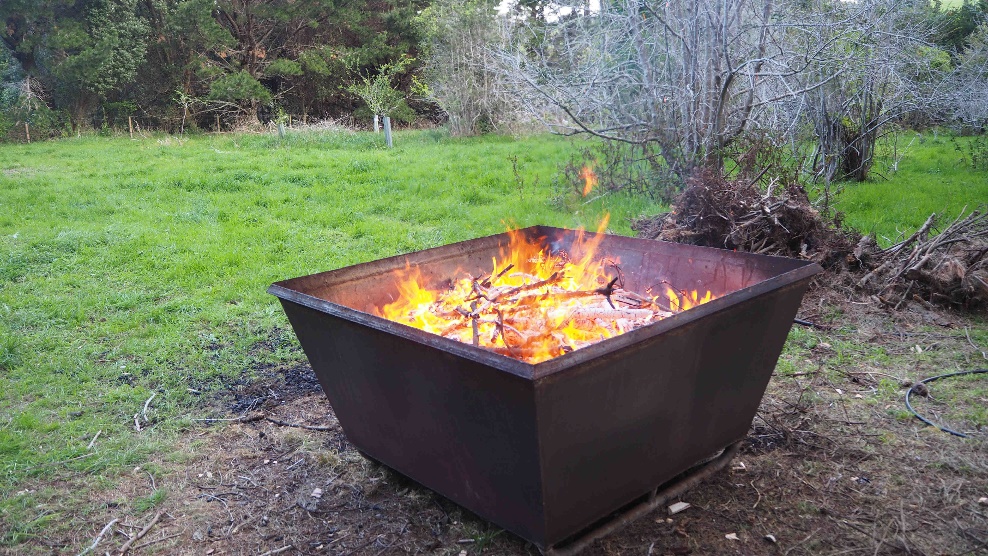
Having done three burns we consider the kiln has worked very successfully for our purposes.
Oddly enough, this leads us to our next dilemma – 3 to 4 cubic metres of biochar that needs to be crushed and screened.
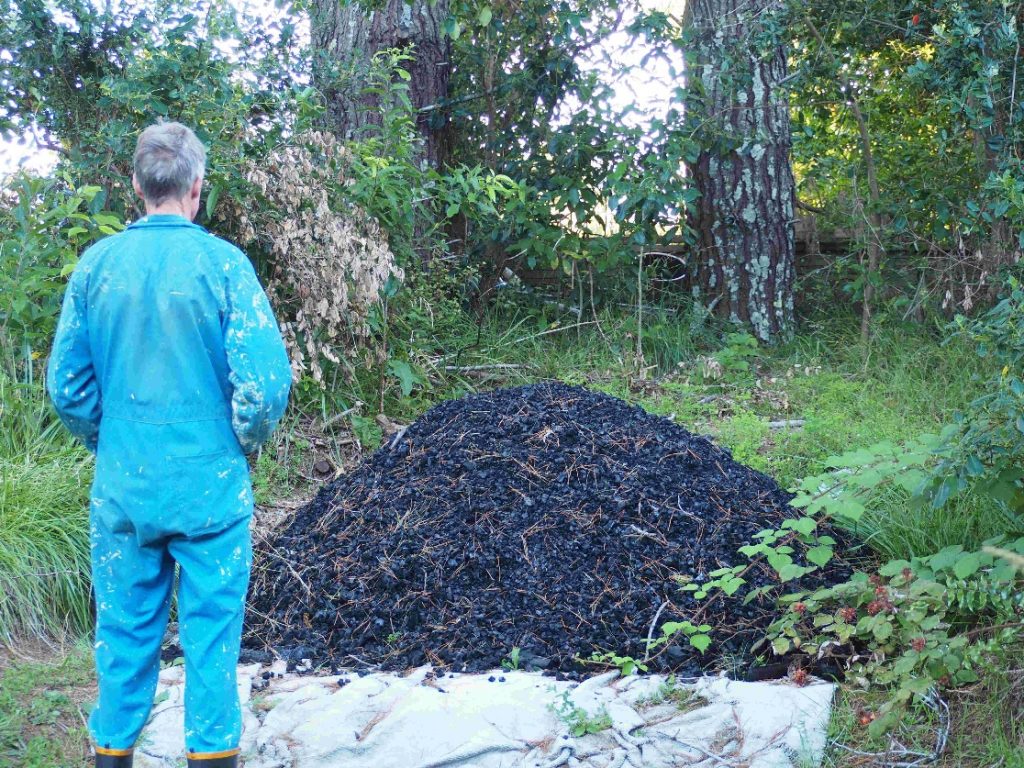
Any suggestions would be greatly appreciated.
Then we can start worrying about activating the biochar.
Cheers,
Clyde, Diane and family.
https://www.sciencedirect.com/science/article/abs/pii/S0959652616322181#!
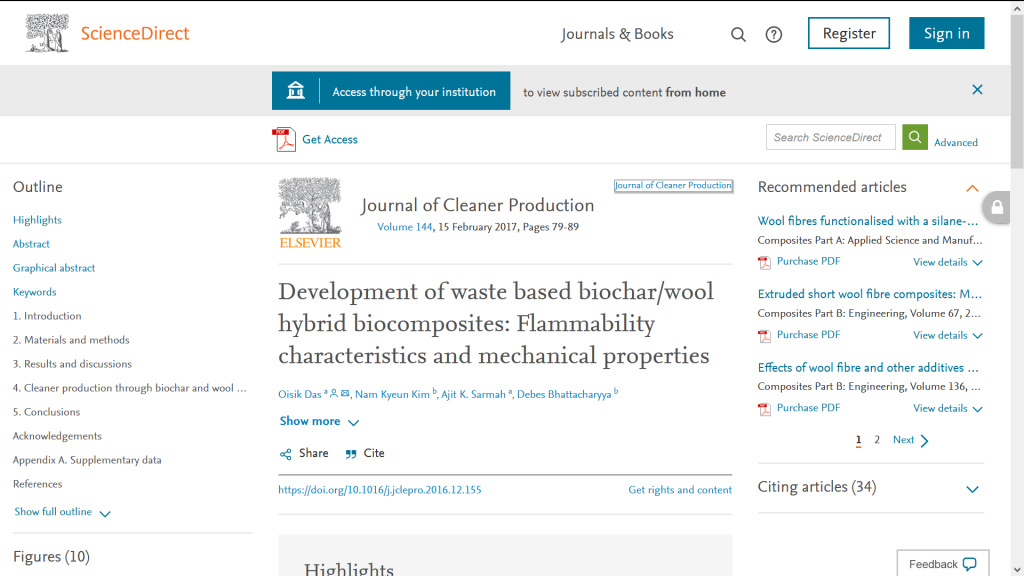
“Due to the realisation of the reinforcement potential of waste based biochar and wool in polymeric composites, in the recent past, their individual flammability, thermal and mechanical properties were determined. Composites were manufactured with biochar and with both biochar and wool in conjunction with the halogen free flame retardant, which was followed by their characterisation through cone calorimeter, limiting oxygen index (LOI), thermogravimetry, tension/flexural tests, and scanning electron microscopy (SEM). Biochar exhibited a high resistance to heat without being ignited and possessed very low heat release and smoke production rates. Wool, although, had relatively high peak heat release rate (PHRR), its advantageous charring ability enabled a gradual reduction in heat release until flameout. The hardness and modulus of biochar were 4.3 GPa and 26 GPa, respectively. The tensile strength and modulus of wool were 160 MPa and 4.8 GPa, respectively. Composites containing biochar and wool significantly reduced the PHRR, smoke production, and elevated the mass loss rate (compared to neat polypropylene/PP). Hybridisation with wool proved to be beneficial for enhancing the LOI. Certain mechanical properties, such as flexural strength and tensile/flexural moduli, were preserved and enhanced, respectively, due to biochar pore infiltration by PP as seen in SEM.”
Nice article here, just published in October edition of Grapegrower & Winemaker
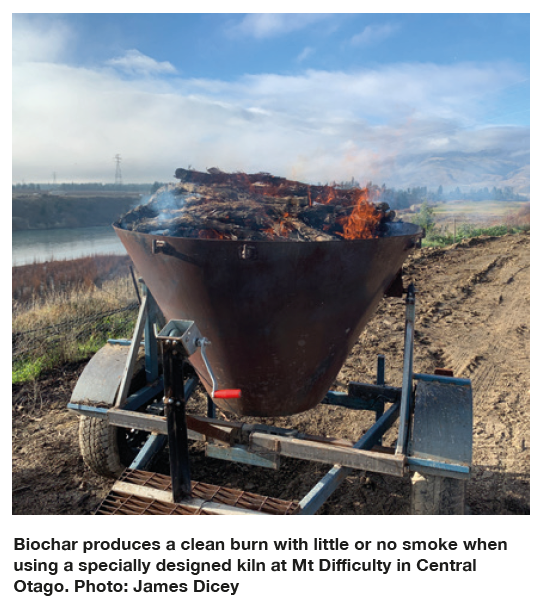
Eugenie Sage, Minister of Conservation and Associate Minister for the Environment learns about pyrolysis and biochar from Jessica Lunsford, BNNZ member and Lincoln University masters student.
https://www.linkedin.com/posts/activity-6707368701328445440-yK1w
